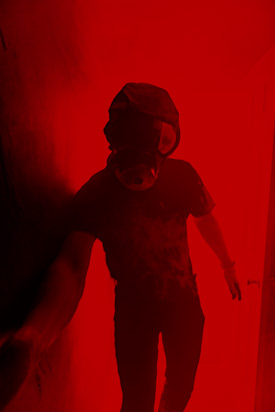OPITO FOET CA-EBS
$675.00
We’ve launched an online booking system at booking.allstop.net. The system is now available for credit card payers only. If you are paying by credit card please click the button below to go to the site.
Corporate accounts please email or call us to book classes.
Email Us Directly: admin@allstop.net
Course Summary
The OPITO-approved Further Offshore Emergency Training program with Compressed Air Emergency Breathing System (CA-EBS) is a 1-day course which must be undertaken by individuals who have a valid BOSIET (with CA-EBS), BOSIET(with EBS), TBOSIET, FOET (with CA-EBS), FOET(with EBS) or TFOET certificate. The FOET (with CA-EBS) certificate re-validates a delegate’s offshore emergency training for a further 4 years.
Duration: Up to 8 Hours depending on number of attendees
Start Time: 11:30 AM
Accreditation:
OPITO
Course Code:
5850
Validation:
4 Years
Please Note: Due to the physical demands of the course, it is the responsibility of the employer and participant to pre-determine the participant’s ability to safely attend the course.
FOET Training in Houston, Texas
Learning Outcomes
HELICOPTER SAFETY AND ESCAPE TRAINING
Assessment Method: Direct Observation
- Donning of an aviation transit suit, an aviation life jacket, compressed air emergency breathing system (CA-EBS) equipment and conducting integrity checks of the CA-EBS equipment, including buddy checks D.5.5 (1)
- Deploying (left and right hand) and breathing from CA-EBS equipment at atmospheric pressure in dry conditions D.5.5 (2)
- Actions to take in preparing for a helicopter emergency landing D.5.5 (3)
- Following instruction from the crew, location of CA-EBS equipment and evacuation from a helicopter using a nominated exit, following a controlled emergency descent to a dry landing (conducted in helicopter simulator at poolside on dry land) D.5.5 (4)
- Actions to be taken in preparing for an in-water ditching including location of exit, deploying and breathing from CA-EBS equipment at atmospheric pressure in dry conditions (conducted in helicopter simulator at poolside on dry land) D.5.5 (5)
- Dry evacuation, using a nominated exit, to an aviation life raft from a helicopter ditched on water (and, on instructions from the aircrew, operation of a push out window), assisting others where possible and carrying out initial actions on boarding the aviation life raft, to include: mooring lines, deploying the sea anchor, raising the canopy and raft maintenance* D.5.5 (6)
- Escaping through a window opening which is underwater, from a partially submerged helicopter (without operation of a push out window)* D.5.5 (7)
- Escaping through a window opening which is underwater, from a partially submerged helicopter (with operation of a push out window)* D.5.5 (8)
- Escaping through a window opening which is underwater, from a capsized helicopter (without operation of a push out window)* D.5.5 (9)
- Following escape from the helicopter (HUET), inflate life jacket, deploy spray visor and carry out in-water procedures, to include swimming, getting into Heat Escape Lessening Position (HELP), towing, chain, huddle and circle* D.5.5 (10)
- Boarding an aviation life raft from the water* D.5.5 (11)
- Being rescued by one of the recognized methods available offshore and survivor actions following rescue* D.5.5 (12)
- Deploying CA-EBS (above the water surface) and breathing from the CA-EBS in a pool, face down in shallow water (at a maximum depth of 0.7m, measured at the chest) D.5.5 (13)
- Deploying CA-EBS (below the water surface, face down in a pool in shallow water) and clearing the mouthpiece by exhaling under the water surface (at a maximum depth of 0.7m, measured at the chest) D.5.5 (14)
- Deploying CA-EBS (below the water surface, face down in a pool in shallow water, using opposite hand to previous exercise) and clearing with purge button under the water surface (at a maximum depth of 0.7m, measured at the chest) D.5.5 (15)
- Deploying CA-EBS (above water surface), in a pool and breathing from CA-EBS underwater in a vertical position (at a maximum depth of 0.7m, measured at the chest) D.5.5 (16)
- Deploying CA-EBS (underwater), in a pool and breathing from CA-EBS underwater in a vertical position (at a maximum depth of 0.7m, measured at the chest) D.5.5 (17)
- Deploying CA-EBS (underwater), in a pool, breathing from CA-EBS underwater, and moving along a horizontal rail for a period of no less than 30 seconds, including a change in direction (at a maximum depth of 0.7m, measured at the chest) D.5.5 (18)
FIRE FIGHTING AND SELF RESCUE TECHNIQUES
Assessment Method: Direct Observation
- Correct use of appropriate hand held portable fire extinguishers and which ones to use for different classes of fires. D.5.6 (1)
- Self-rescue techniques with a smoke hood or partial blindfold from areas where delegate visibility is reduced. D.5.6 (2)
- Self-rescue techniques with a smoke hood or partial blindfold from areas where delegate visibility is completely obscured D.5.6 (3)
- Small group escape techniques with a smoke hood or partial blindfold from areas where delegate visibility is completely obscured D.5.6 (4)
FIRST AID
Assessment Method: Direct Observation
- Raising the alarm D.5.7 (1)
- *Immediate first aid actions, to include industry recognized first aid practice ** D.5.7 (2)




